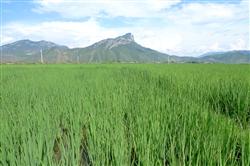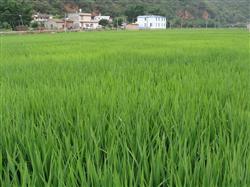How to dry the rice field?

How to dry the rice field? Rice drying is an important measure to improve the soil structure of paddy field, promote the root system of seedlings, enhance the root activity of rice, improve the tenacity and lodging resistance of rice stalk, control ineffective tiller, increase panicle rate, improve field microclimate and reduce the occurrence of rice diseases and insect pests. However, rice drying, only by mastering the "heat", can we achieve the desired results. In the drying time, we should adhere to the principle of "when the seedlings are not equal, the time is not waiting for the seedlings". The so-called "unequal time for seedlings" means that enough seedlings (usually 200000-250000 total tillers per mu) should be exposed to the field, and there is no need to wait until the growth and development of rice reaches a certain period. Due to the strong tillering ability of hybrid rice, it can still continue to tiller at the beginning of drying, so the drying time should be advanced appropriately, and the drying should begin when the total number of tillers reaches 80% of the planned number of seedlings. The so-called "unequal seedlings from time to time" means that once rice enters the late tillering stage to the initial stage of young panicle differentiation, even if the total number of tillers per mu has not reached the predetermined target, it should be drained and sunburned in time. Otherwise, if the opportunity is missed, the sensitivity of rice to water will be enhanced, so it is no longer appropriate to run out of water to dry the field. In terms of the degree of drying, it is necessary to look at the fields, seedlings, and weather. Generally speaking, fertile fields with thick green leaves and exuberant growth, and low-lying cold-soaked mud fields should be exposed to the sun; thin fields with green leaves, average growth, little fertilization, and dry fields with difficulties in irrigation should be exposed light; for sandy fields with poor water conservation, clay fields that are easy to harden after sun exposure and difficult to soak after rehydration, and "Wangtian" fields that lack irrigation conditions, should not be exposed to the sun. The drying time is generally controlled at 5-7 days, so that the chicken feet crack appears on the surface of the field, the leaves of the seedlings turn pale, the leaves are as straight as swords, the feet do not sink when entering the field, the new roots appear on the surface of the field, and the old roots go down. Water should be rehydrated in time after drying the field, and 2kg of urea per mu should be applied according to the seedling growth situation, until the water is no longer cut off before heading to promote rice booting and jointing. This year, we should pay special attention to the fact that due to persistent drought and water shortage, some rice have been "exposed to the sun", that is, there is no water layer in the field before the drying time, and some of the fields are even dry and cracked, resulting in difficulties in tillering and insufficient number of seedlings. In this case, it is necessary to carry out shallow ploughing of the paddy field, loosen the surface soil, cut off the capillaries, reduce the loss of soil moisture, prevent the field from cracking in large areas, and at the same time facilitate the acceptance of Rain Water. Once there is water, it is necessary to fertilize in time to promote the growth of seedlings. Click to get more rice planting techniques click to get more food crop planting techniques
- Prev

How to manage the later stage of rice growth?
How to manage the later stage of rice growth? What should I pay attention to? In the later stage of rice growth, it is especially necessary to prevent premature senescence. Premature senescence occurs in rice from heading to maturity, which will lead to poor grain filling, increase of blighted grain and decrease of yield. There are many factors leading to premature senescence in the later stage of rice growth. First, improper cultivation and management. Fall.
- Next

How to dry the rice field? What's the use?
How to dry the rice field? What's the use? Please introduce the method of drying rice field is one of the main technical measures to increase yield and promote early maturity of rice. First, the main role of drying field 1, control ineffective tiller, consolidate effective tiller. When the rice tiller has reached a certain number, that is, enough seedlings, our province from the time point of view.
Related
- The first cup of black tea in spring, the flavor and history of tea gardens in Kenya, Africa
- The computer can not only choose potatoes, but also grow tea rice. AI will grow winter oolong tea champion.
- It is not only the inflated tea bitten by insects, but also engraved with the four seasons tea in Beipu.
- The Oriental Beauty Tea Festival in Zhuxian County takes the stage at the weekend to experience the plus-size feast of oil tea.
- & quot; Oriental Beauty Tea & Exploration of Emei in Hsinchu, the hometown of quot;
- The new variety of strawberry "Tainong 1" dessert is the first choice with mellow aroma. Crimson gorgeous
- History of Tea in Taiwan: from Wild Inner Mountain to Export Tea Garden
- Two types of Taiwan Oriental Beauty Black Tea won the British three-Star Award for Childhood Tea Xiang Zhang Jiaqi changed from pilot to champion tea maker.
- Banana species and varieties: the planting history of Taiwan Xianren banana and dwarf banana is long, is banana disease resistant?
- Coffee planting Technology: Qianjie Coffee from Seedling to harvesting

